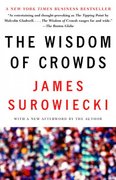Question 1. (5 points)Which is more likely to be a Gien good, a commodity that people buy lots of or a commodity that people don't buyr much of? Question 2. {15 points} If a consumer consumes exactly two goods: and always spends all her money no matter how much she has, can both of them be inferior goods? Question 3. (it) points} The price of gasoline increases. Think about how this would affect consumption of gasoline if gasoline preferences are well behaved. What would be the substitution effect (explain what it means intuitively and whether it is likely to be positive or negative)? What do you think would be the income effect (explain what it means intuitively and whether it is likely to be positive or negative}? Draw a graph to illustrate your point. Question 4. (15 points) Suppose a factory manufactures dinner plates. They sell two types of plates: first-quality plates {perfect plates] for a price p] and second-quality plates (slightly blemished plates} for a smaller price p2. They sell both plates in two types of stores: outlet store next to the factory (no shipping required] and regular stores around the country (a shipping cost of s is required: so the price of the plate there is p+s). Assume that consumer tastes with respect to plates are the same everywhere: both plates are a normal good, income effects are small (because people spend a small share of their income on pates). It turns out that the factory sells much more blemished plates at the outlet store than at the regular store. Use economic theory to explain why. Hint: you can use a numerical example p1=2, p2=1, s=1 for the ease of exposition. Question 5. Suppose a utility function is given by U(x1;x2}=rnin(x1;2x2}. a} (10 points] Draw an Engel curve for good x1 and for good x2 (write out what is the slope of the curves}; b} (10 points) What is the Jnction describing the Engel curve? Question Ii. (15 points) Suppose a utility Jnction is given by U(xl;x2)=xl+x2. The prices are p1=1 and p2=2. Income is $10. Suppose p1 decreases to p'1=.5. What are going to be income and substitution effects in this example? Draw a graph to illustrate your answer. Question "J". (2i) points) Suppose a utility Jnction is given by U(xl;x2)=xl+x2. The prices are p1=2 and p2=1. Income is $10. Suppose p1 decreases to p'1=.5. What are going to be income and substitution effects in this example? Draw a graph to illustrate your







